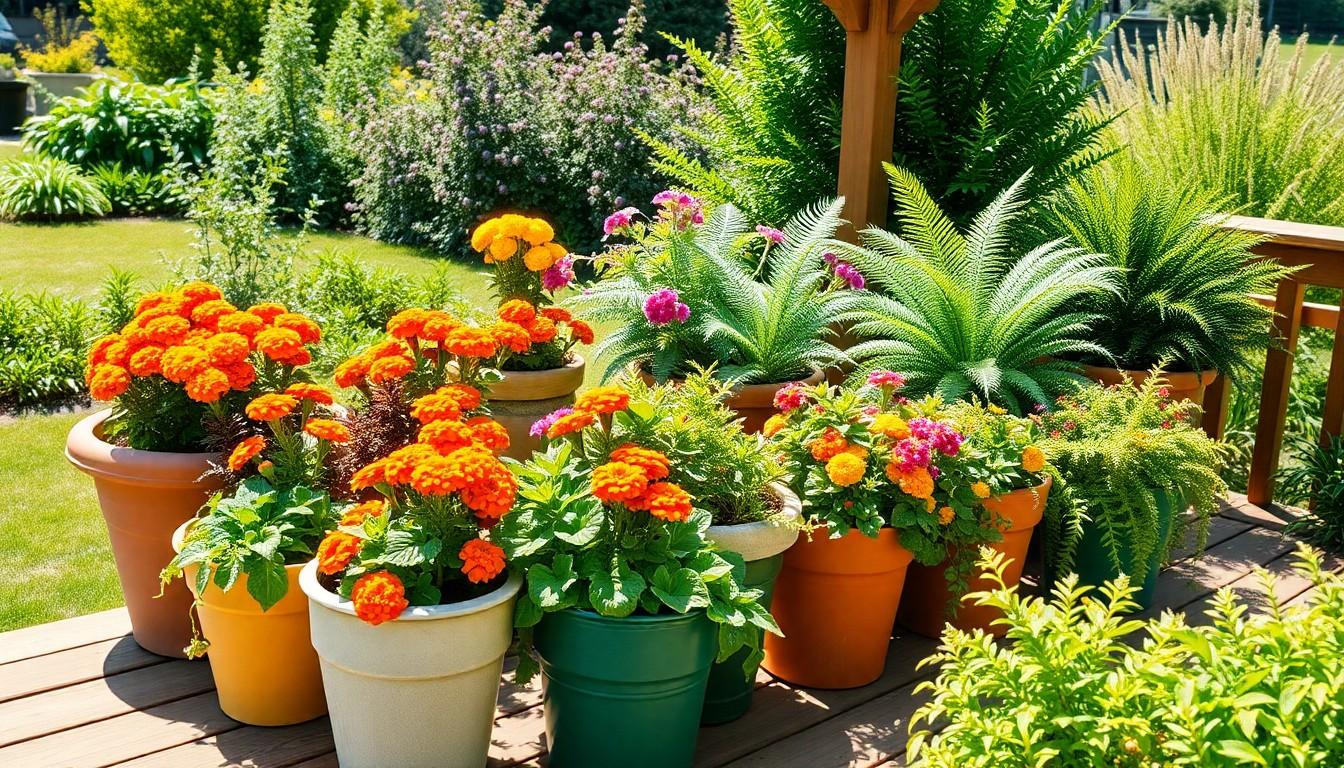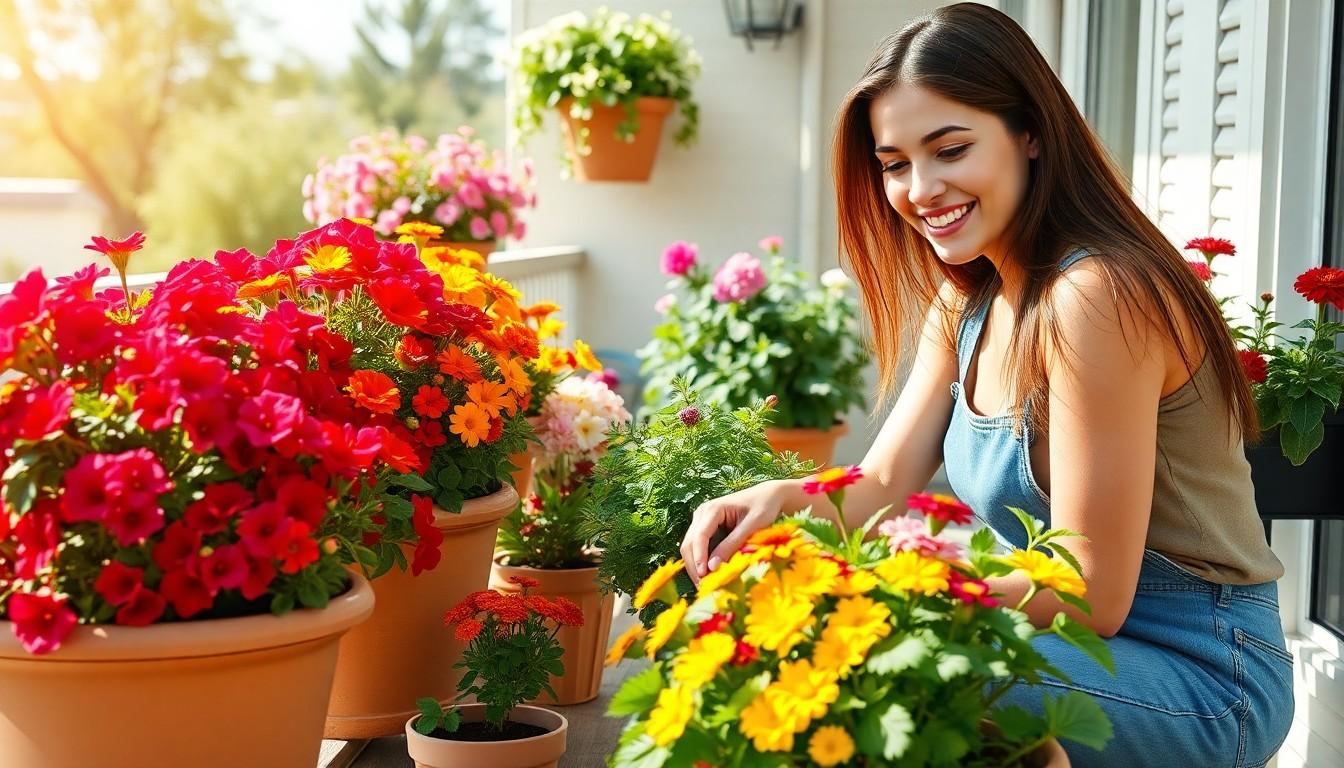Transforming outdoor spaces into vibrant retreats is easier than it sounds. With the right plants for outdoor planters, anyone can create a lush paradise that’ll have neighbors peeking over the fence in envy. Whether it’s a sunny balcony or a cozy porch, the right greenery can turn any dull area into a botanical wonderland.
Benefits Of Using Plants For Outdoor Planters
Plants in outdoor planters enhance the overall environment, contributing to both aesthetics and functionality. Selecting the right greenery offers numerous advantages.
Aesthetic Appeal
Vibrant colors elevate the visual interest of outdoor spaces. Different plant textures create diverse and inviting displays. Arrangements can range from seasonal flowers to lush foliage, adding life to decks or patios. Various heights and forms give depth to designs, accommodating personal style. For instance, combining trailing vines with upright plants creates a striking contrast. Ultimately, outdoor planters serve as eye-catching focal points that draw positive attention.
Functional Advantages
Plants also provide practical benefits. They improve air quality by absorbing toxins and releasing oxygen. Container gardening allows for easier plant maintenance due to controlled environments. Certain varieties function as natural insect repellents, reducing pests in the vicinity. Additionally, planters can serve as space dividers on balconies or small yards. They enable gardening in areas with poor soil conditions, creating opportunities for all gardeners. Such functionalities make outdoor planters a versatile choice for enhancing outdoor living.
Selecting The Right Plants For Outdoor Planters

Choosing the right plants ensures outdoor planters flourish. Factors like climate and sunlight significantly influence plant selection.
Climate Considerations
Climate plays a vital role in plant health. Tropical plants thrive in warm, humid conditions while hardy species endure frost. Analyzing local weather patterns helps determine suitable plant types for outdoor planters. Regions with high rainfall may require plants that tolerate wet conditions, such as ferns or hostas. Conversely, arid climates favor drought-resistant plants like succulents or lavender. Knowledge of seasonal changes informs choices; selecting perennials ensures consistent color through multiple seasons. Assessing local average temperatures provides a clear guide for plant survival.
Sunlight Requirements
Sunlight levels impact plant growth significantly. Different plants require varying amounts of light, influencing planter choices. Full sun plants, like marigolds and petunias, need six or more hours of direct sunlight daily. Shade-tolerant varieties, such as impatiens or ferns, flourish in low-light environments. Exposure to afternoon sun can be harsher, affecting some plants. Monitoring specific areas for sunlight patterns helps identify the best conditions for chosen plants. Ideal plant placement creates a thriving ecosystem, enhancing visual appeal and overall health in outdoor spaces.
Popular Plants For Outdoor Planters
Selecting the right plants for outdoor planters significantly enhances any outdoor space. Both flowering and foliage plants contribute unique benefits and aesthetics.
Flowering Plants
Flowering plants add vibrant colors that create visual interest. Petunias flourish in various colors and are easy to maintain. Geraniums provide long-lasting blooms and tolerate different climates. Taken together, marigolds offer bright shades and deter pests, making them practical additions. Additionally, impatiens thrive in shaded areas, offering a splash of color where sunlight is limited. Matching flowering plants with containers emphasizes personal style while encouraging pollinators to visit the garden.
Foliage Plants
Foliage plants bring texture and depth to outdoor planters. Ferns, with their lush fronds, offer a soft, elegant touch. Heucheras, also known as coral bells, add rich colors that contrast beautifully with flowers. Hostas excel in shade, providing bold leaves that create a stunning display. Furthermore, succulents introduce a contemporary feel, requiring minimal water and maintenance. Placing these foliage plants alongside flowering varieties creates a balanced, visually appealing arrangement.
Care And Maintenance Tips
Caring for outdoor planters ensures healthy and vibrant plants. Regular attention to watering and fertilization promotes robust growth.
Watering Guidelines
Watering plants requires a keen understanding of their needs. Observe soil moisture levels to determine when to water. Most outdoor planters benefit from deep watering once or twice a week, ensuring roots absorb enough moisture. Adjust frequency based on weather conditions, opting for more frequent watering during hot, dry spells. Overwatering, however, can lead to root rot, so it’s essential to allow soil to dry between sessions. Additionally, consider using drip irrigation systems or self-watering planters for convenience and better moisture management.
Fertilization Techniques
Fertilizing outdoor plants fosters healthy development. Start with a balanced, slow-release fertilizer during the planting process. Apply it according to package instructions, ensuring equal distribution around the base of each plant. Regular fertilization every four to six weeks promotes growth, especially for heavy-feeding varieties. Liquid fertilizers can also provide quick nutrient boosts when applied during growing seasons. Be cautious not to over-fertilize, as this can cause nutrient burn, damaging plants and limiting their potential.
Conclusion
Selecting the right plants for outdoor planters can truly elevate any space. By considering climate and sunlight, individuals can create stunning arrangements that reflect their personal style. The combination of vibrant flowering plants and lush foliage not only enhances visual appeal but also contributes to a healthier environment.
With proper care and maintenance, including appropriate watering and fertilization techniques, these plants can thrive and transform outdoor areas into inviting retreats. Embracing the versatility of planters opens up endless possibilities for creativity and enjoyment in outdoor living spaces.

